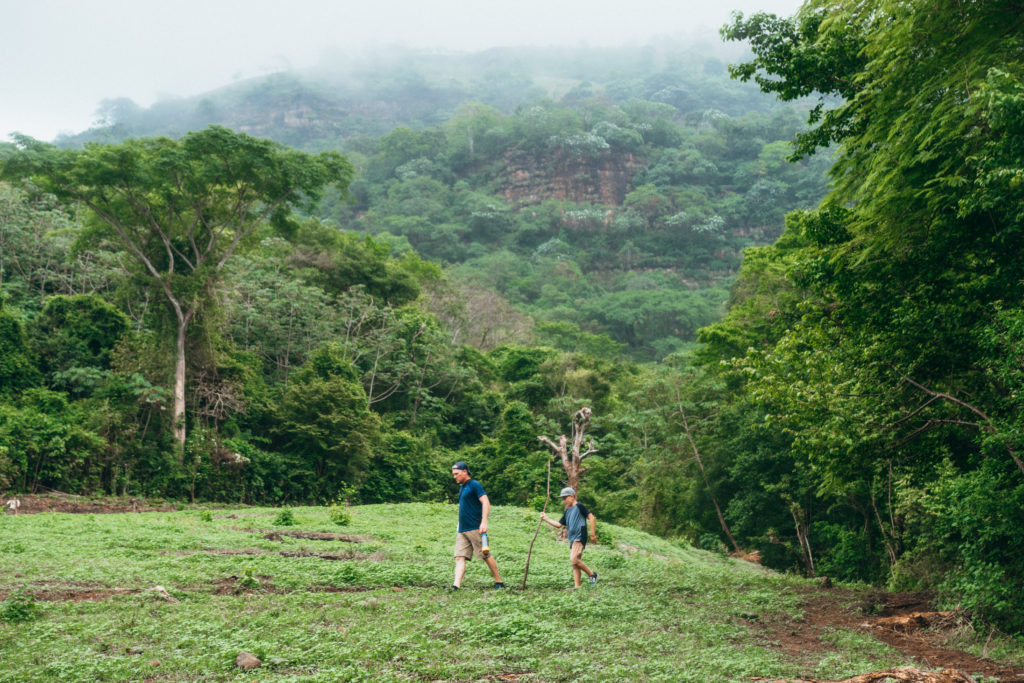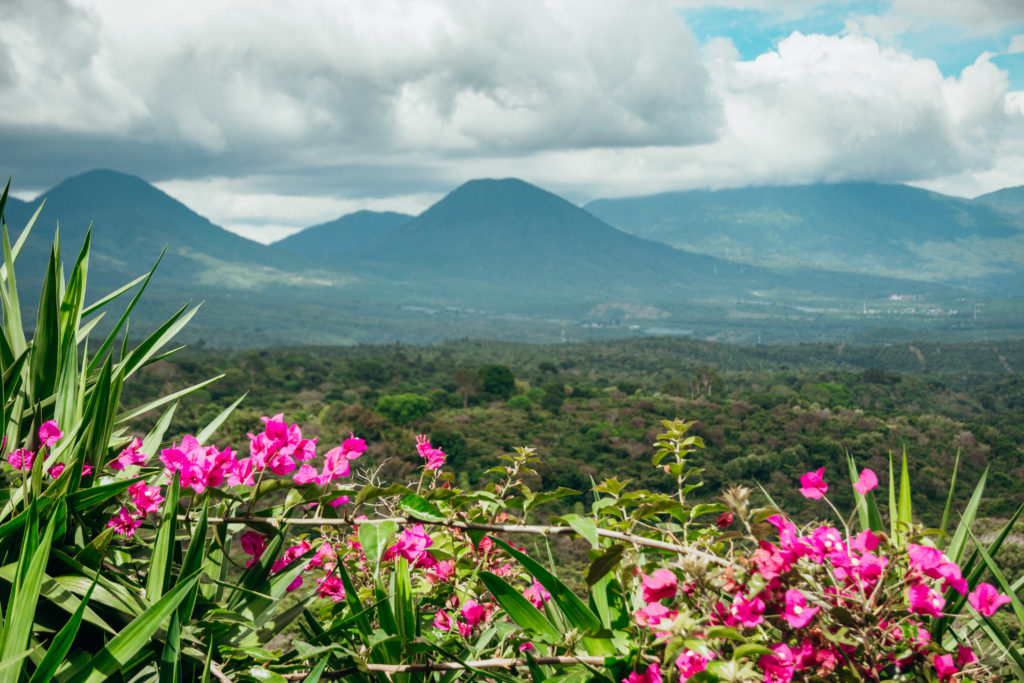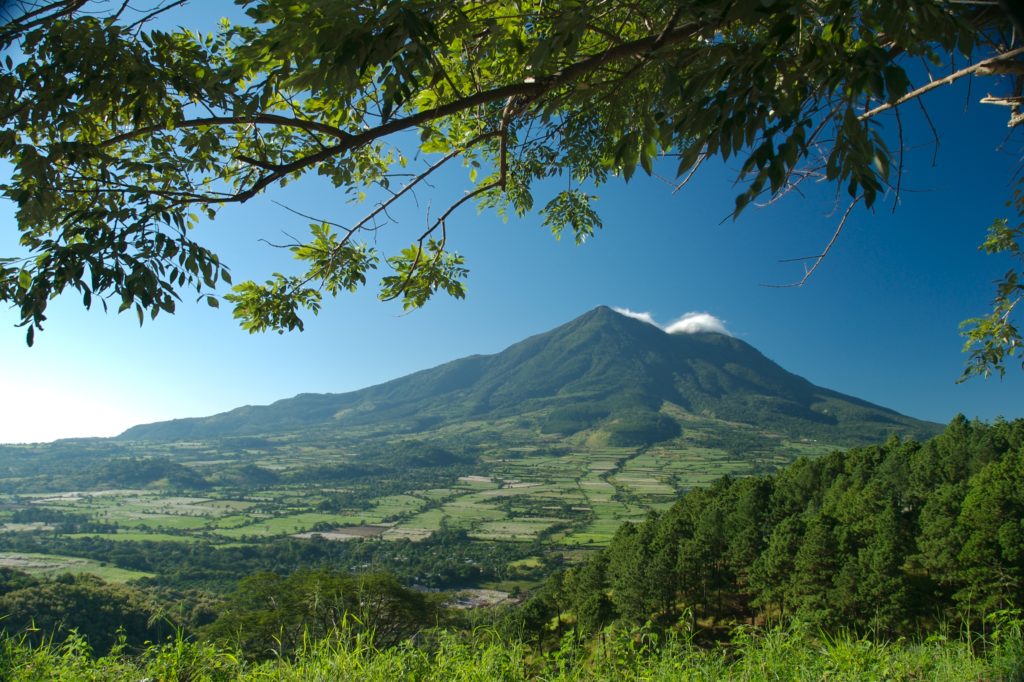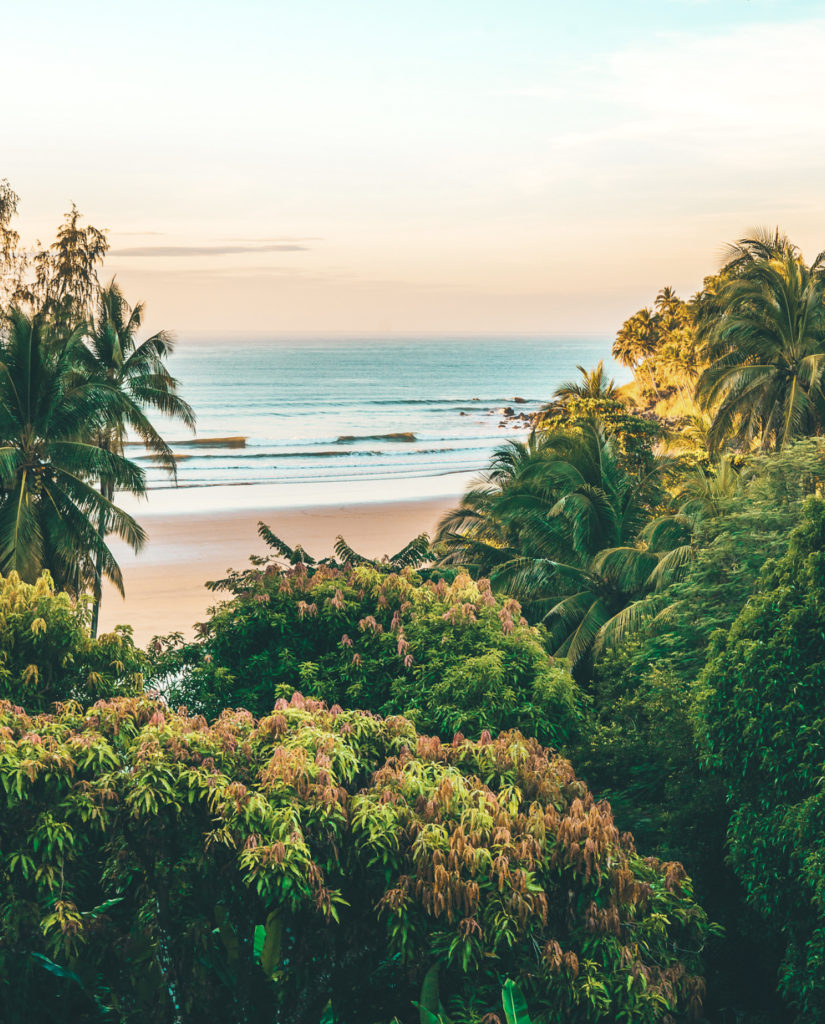El Salvador just might be Central America’s most underrated country. When you compare more popular, nearby countries such as Costa Rica, Belize, or even Panama, El Salvador is usually overlooked. And for good reason: over the past couple of decades, El Salvador has gotten a bad reputation for not being a safe place to travel to. And while there used to be some truth to that, it is simply not the case anymore. After spending almost a month in this country, we fell in love with the beautiful landscape, the culture and the food. That’s why we came up with this El Salvador Adventure Travel Guide.

First things first: Is El Salvador really safe?
This is usually the first question that comes up when one mentions traveling to El Salvador. Due to decades of gang/drug violence and civil war, El Salvador has earned a bad reputation for being unsafe to travel to however, in recent years that has changed. In fact, in Oct 2019, the U.S. State Department just downgraded El Salvador from a travel advisory rank of a 3 to a 2.
Just to put things in perspective, 4 is the highest (meaning do NOT travel to) with countries like Venezuela, Iran, Syria, Afghanistan and North Korea because of war zones. Now that El Salvador is ranked a 2, that puts it in the same category as countries like France, Denmark, Spain and Guatemala (“exercise increased precaution”).
Now, this doesn’t mean that gang violence doesn’t still exist–but generally it is just in certain areas of the country and the violence doesn’t involve tourists because it is aimed at other gang members. So, as a tourist, you are largely safe. Just like any city or country, you should use good judgement such as don’t walk dark alleys or sketchy neighborhoods at night, don’t draw attention to yourself with flashy clothes and jewelry, and never leave your valuables in your car.

How long to spend in El Salvador?
You could spend a week in El Salvador and see a lot since it’s a small country, however, you will still barely scratch the surface. This country packs a powerful punch. We recommend staying at least 10 days in El Salvador, however if you’re on a tight schedule, a week is plenty of time to see some of the country’s best highlights.
The one thing we would highly suggest is renting a car (contrary to what you may hear, it’s totally safe to drive here!) and then doing a road trip through a few areas of El Salvador, however if you are on a strict budget, there are plenty of buses that are easy and cheap to get around with!

Where to stay in El Salvador?
We would recommend picking a few spots and spending 2-3 nights at each place since the best areas of El Salvador are a bit spread out. One area is the coastal region of El Tunco and El Zonte. You can’t come to El Salvador and not go to the beach! The beaches along the Pacific coastline are incredibly beautiful and rugged, and also known for world class surfing!
We especially loved Puro Surf for their top notch surf academy, but also the views and food are out of this world! You can find other great lodging options through Booking.com which is our go-to resource for finding the best accommodations for your budget!
Another area to consider visiting for a few days is the Southern coastal region of Costa del Sol or our favorite, La Flores. You will find less people here and pristine, untouched beaches that stretch for miles. We recommend staying at Vista Las Olas which is beautiful beach front property right on the Las Flores beach. Perfect for surfing, or just getting away and enjoying the nature.
The last area of El Salvador we suggest staying a few days is in the mountainous region along the famous “Ruta de Las Flores” (more on that later). We stayed at a great hostel in Juayua, called Hostal Casa Mazeta, right in town which is central to many of the sights and activities that we enjoyed in the area. Highly recommend this place!
What to do in El Salvador?
If there’s one thing for certain, you won’t get bored in El Salvador. From surfing, to hiking, to taking in the tastes of the famous pupusas, there is no shortage of adventure and culture here. Not only that, but Salvadorians are some of the warmest, most welcoming people you will ever met. Of all the Central American countries we’ve visited, our favorite people were the Salvadorians. They are genuinely excited you are visiting their country and eager to show you their wonderful country.

Hike Santa Ana Volcano
Assuming you start your trip in San Salvador, we would recommend heading to the city of Santa Ana first. It’s only an hour drive and beautiful. You will pass volcanoes, coffee farms, and rolling hills. The town of Santa Ana is quaint. Don’t skip seeing the Cathedral de Santa Ana and the main plaza, Parque Libertad. If you’re looking for a good place to stay for a night, make sure to check out Hostal Casa Verde.
The main attraction here is the nearby Santa Ana volcano. Santa Ana is the tallest volcano in El Salvador and quite unique because of its four nested concentric craters, one inside the other, as a result of many eruptions and seismic activity and its beautiful blue lake in the innermost crater.
The Santa Ana volcano is the tallest and most active volcano in El Salvador because of its beautiful turquoise lake and great 360 degree views from the top. From the rim you have a vantage point over the two other volcanoes, Idalco and Cerro Verde, the ocean on the horizon and Coatepeque Lake on the other side of the volcano. The entire hike is about 8 miles round trip and moderately challenging.

To start the hike, you will need to leave the town of Santa Ana early in the morning (no later than 8AM) to enter Cerro Verde National Park, so you can start the hike around 10-11AM with a ranger. *Note: You have to do this hike with a guide and a police escort due to robberies and theft that have happened here. Groups can be small or large depending on the time of year and day, however once you get started on the trail, you will find that the group disperses.
Entrance fees including guide and entry fees are around $10/person. This hike is definitely a MUST when you travel to El Salvador.
Explore the Ruta de las Flores

One of the things that El Salvador is most known for is the famous Ruta de Las Flores, or route of the flowers. Basically, the Ruta de las Flores is a winding route about 20 miles long that goes through brightly colored towns, coffee plantations and fields of wildflowers (between Nov and March is the best time to witness the flowers). There are 5 main towns along the Ruta de las Flores: Juayua, Ataco, Apaneca, Nahuizalco, and Salcoatitlan. The first 3 are the most noteworthy.
You can easily spend a day discovering these towns which have colorful murals, shops and plenty of delicious cafes to get some good pupusas (our favorite was Esmeralda’s in Juayua!) and coffee. There is also a giant labrinyth in Apaneca if you like mazes. Also, don’t miss the food market in Juayua, but come on a weekend! If you’re a big coffee drinker, you can also do a coffee plantation tour just outside of Ataco.
We would suggest spending a minimum of 2 days in the area, and staying in the town of Juayua (as recommended previously, we loved staying at Hostal Casa Mazeta). There are several outdoor activities you can do in the area, but a few we would suggest NOT skipping would be the Los Chorros de la Calera (7 Waterfalls) hike, the hot springs, and the canopy/zipline tour in Apaneca.

The 7 Waterfalls hike starts in Juayua and if you stay at Casa Mazeta, they can book it for you. It costs about $10-15/person (including lunch) depending on the size of group you have. Of course, this covers the guide (which you need otherwise you will get lost), but also the gear they provide (a helmet) since this hike requires rappelling down waterfalls! It is somewhat of a challenging hike (not ideal for young kids), but absolutely worth it! You will pass through jungles, coffee farms and see volcanoes, and of course several waterfalls!
The hike itself may feel a little sketchy at times rappelling down waterfalls with only a rope and a helmet (no harness!), however, the guides are right there making sure you’re safe. Honestly, it didn’t seem as sketchy as it looked. The last waterfall you can swim in, and it feels great after a hot day hiking in the jungle!
There are a few hot springs along the Ruta de Las Flores that are worth going to, some free and others paid. Termales Santa Teresa is located in the town of Ahuachapan and costs about $10/person. These hot springs are beautiful and lush, however if you’re on a budget and want to visit free hot springs, check out Salto de Malacatiupan, located just outside of Ahuachapan. Amazing!

One more area of interest to note: Right on the edge of Guatemala, the mostly primary forest of Parque Nacional El Imposible shimmers with rivers and beautiful waterfalls. Hiking can get muddy and steep, but it rewards with panoramas of misty peaks and the Pacific Ocean off to the west. The best time to visit is October to February, as the rainy season hinders travel. There are several hiking trails to explore if you choose, however we would suggest doing a guided tour.

Go surfing
After spending several days inland exploring the mountainous regions of El Salvador, it’s time to head to the coast. El Salvador is known for its surf and draws some of the biggest names in the surf industry to its rugged Pacific coast every year. We came to El Salvador to learn to surf, primarily because it’s so much cheaper to take lessons here than other Central American countries like Costa Rica or Panama. For $10-15/lesson, you can easily take a whole week’s worth of surf lessons for dirt cheap and get the basics down. Plus, it’s just AWESOME!
The most popular areas to surf in the country are the area of El Tunco/La Libertad and El Zonte, located about 45 minutes west from the San Salvador airport. We took several lessons from the pros at Puro Surf and had a blast. Their surf academy is top notch–in fact, we’ve never seen anything like it!
From yoga and fitness classes designed for surfers in mind, to a skate ramp to learn balance and turning, to a lap pool specifically for practicing your paddling, Puro Surf has it all. They are serious about getting you off on the right foot (literally) and ensuring that you learn proper stance and form first, before heading out the ocean. And trust me, it’s a GAME CHANGER. On our very first wave, we all got up!

Some of other great beaches for surfing in El Salvador include Punto Mango, Las Flores, Playa Conchalio, Sunzal, and Punta Roca. We also loved El Cuco which wasn’t as rocky as some of the others. Also, it is important to note that if you are a beginner surfer, the best months to surf are between December to April. After that, the swell gets bigger and stronger in the wet season (May to November).
Visit Tamanique Falls

Not far from El Tunco, about a 30 min drive east into the mountains lies this gem, Tamanique Falls. This is a great place to cool off, as the coast gets very hot and humid. The Tamanique Waterfalls is a group of 4 waterfalls, where you can jump off 3 of them. The last waterfall has a pool where you can swim and relax in just below the waterfall. The hike takes about 30-45 minutes to reach the falls from the town of Tamanique.
You can also catch a bus from El Tunco to Tamanique (look for the bus with the sign “Tamanique” on it) which takes a bit longer than driving yourself. To find the trailhead once in town, simply ask a local in town and they will direct you. If you don’t feel confident going on your own, many of the locals are willing to take you for a small fee.
Watch the sunrise from Espiritu de la Montana
From the El Tunco area, if you drive south a few hours, you will eventually get to the Las Flores area mentioned above. We highly suggest setting up base here and spending a couple of days surfing or relaxing at some of the beaches in this area. They were the most beautiful beaches we witnessed in all of El Salvador. Don’t be afraid to ask the locals for their faves too!
About an hour south of Las Flores is the town of La Union which is located right on the Gulf of Fonseca, a beautiful gulf that borders 3 countries–El Salvador, Honduras, and Nicaragua. Here lies Volcano Conchagua, which overlooks the Gulf of Fonseca.

At the top of Volcano Conchagua is a lookout, named Espiritu de la Montana, and the best time of day to witness the view of this gulf is at sunrise. This requires camping here for a small fee. To climb to the top, you can either drive your a 4 X 4 up the dirt road or you can also hike to the highest point (about 3 hours). At the viewpoint you can camp on the wooden deck or if there is a lot of wind you can camp in the forest. There is also a basic shop and restaurant here too. Definitely worth the trip–best view in all of El Salvador!

El Salvador is a country that is just waiting to be discovered. It has been called the “next Costa Rica” and after spending a few weeks in this incredible country, I’m convinced tourism is only going to rise here. Our advice is get here before everyone else finds out about it!
If you’re looking for off-the-beaten path adventures in the underrated, neighboring country of Guatemala, make sure to check out 8 Outdoor Family Activities in Lake Atitlan, Guatemala, or 3 Days of Adventure in Semuc Champey. Guatemala is another incredible country that often gets a bad rep, but far exceeded our expectations in every way.





























